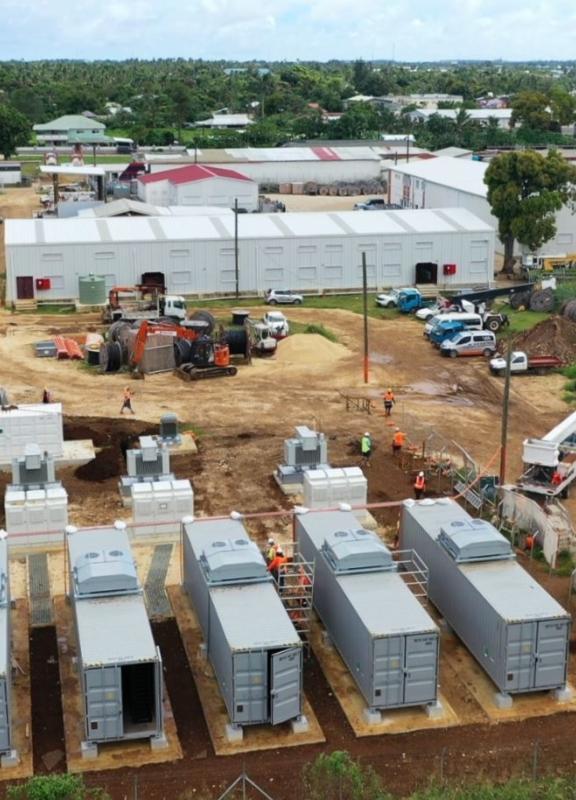Akuo commissions the South Pacific’s largest storage project
Nuku’alofa, Tonga, May 17th, 2022 – Akuo, an independent global renewable energy power producer and developer, and Tonga Power Limited, the Tonga Islands’ public grid operator, announce that they commissioned Tonga 1 & 2, the South Pacific’s largest battery energy storage system with a total capacity of 29.2 MWh / 16.5 MW.
A stationary battery service
The two battery storage facilities use Storage GEM®, the innovative modular energy storage container technology developed by the Akuo Group. A total of 8 such containers have thus been deployed on Tongatapu, the Tonga archipelago’s main island: three Storage GEM® for Tonga 1 and five for Tonga 2. Because of the global public health crisis, the deployment of these two projects on behalf of Tonga Power Limited, signed in July and November 2019 respectively, was in large part steered remotely, helped by the substantial adaptability of the methods used and the site’s organization. The containerized technology, entirely checked on test benches in the factory, easily lent itself to remote deployment.
A resilient set-up that has already proven itself during the volcanic eruption of January 2022
These two facilities have already had an opportunity to prove their resilience. Indeed, the volcanic eruption of January 15th, which resulted in a tsunami that devastated the archipelago’s coastline and cut the country off from the rest of the world, did not affect their ability to function correctly, enabling these facilities to continue operating and help stabilize the grid in the days following the catastrophe.
Better penetration of renewable energies in the archipelago’s energy mix
Previously, the Kingdom of Tonga’s renewable energy capacity (3 solar farms and 1 wind farm) totaled 5.6 MW, an electricity mix penetration rate of just 10%. These two facilities provide direct support to the grid and provide Tonga Power Limited with facilitated steering thanks to the customized EMS (Energy Management System) developed by Akuo. The Tonga 1 facility, with a capacity of 5.3 MWh / 9.3 MW, is designed to improve the grid’s stability, while Tonga 2, which has a greater capacity of 23.9 MWh / 7.2 MW, is designed for load-shifting. Together, they meet Tonga’s need to strengthen its storage capacity in order to support the increase in the percentage of renewable energy in its electricity mix and are contributing to the islands’ goal of increasing the share of renewables to 70% by 2030. They have already allowed Tonga to double its renewable energy capacity, with the connection of 6 MW of solar supported by a private partner.
The installation of these facilities was made possible by the "Tonga Renewable Energy Project" program, financed by the Green Climate Fund (56%), the Asian Development Bank (23%), the Tongan government (10%), Tonga Power Limited (6%) and the Australian government (5%).
Jean Ballandras, CEO of Akuo Asia-Pacific, commented: “In 2013, the international renewable energy agency, IRENA, highlighted in its "Pacific Lighthouse" report on the archipelago that Tonga’s solar energy production would be unable to cope with peak consumption times without storage solutions being put in place. Akuo decided first and foremost to tackle this issue: Tonga is now capable of installing renewable energy capacities at a much faster rate. We would like to thank the Asian Development Bank and the Green Climate Fund, who have assisted us with this project. This success demonstrates Akuo’s ability to hybridize complex multi-energy systems and thus help grid operators with their energy transition”.
